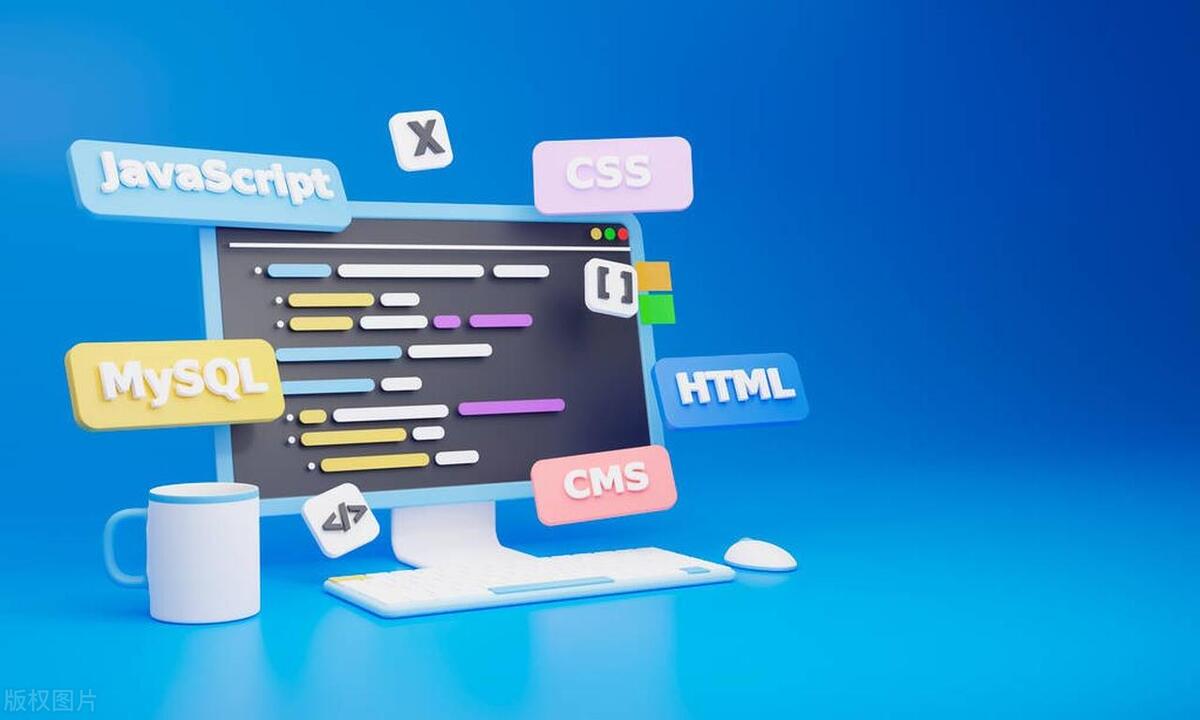Custom Hooks are a way to reuse state logic in React. It starts with use, calls other Hooks and returns data or methods; its core advantages are reuse logic, simplify components, and optimize structure; for example, useWindowSize can encapsulate window listening logic; when creating, naming specifications, calling Hooks at the top level, and returning values ??reasonably; when using it, pay attention to avoiding class components, reducing the number of parameters, and following a single responsibility; compared with higher-level components, Hooks are more intuitive and have no nesting problems; mastering the principles of naming, calling and responsibilities can improve code quality.

In React, a custom Hook is a way to extract component logic into a reusable function. It is essentially a JavaScript function starting with use , which can call other Hooks (such as useState , useEffect , etc.) to encapsulate some common state logic or side effects processing.

Why use a custom Hook?
As React's components become more complex, state logic tends to be scattered in multiple life cycle hooks or recurring between different components. Custom Hooks are used to solve these problems:

- Reuse state logic : instead of copy-paste code.
- Make components simpler : Extract complex logic, and components only focus on the UI layer.
- Better organization of code structures : grouped by function, not by life cycle.
For example: If you have multiple components that need to listen to window size changes, you can put this part of the logic into a useWindowSize custom Hook instead of writing each component once.
How to create a custom hook
The process of creating a custom Hook is actually very simple, you only need to follow a few rules and steps:

Name begins with
use
For example,useInput,useFetch,useLocalStorage, which is a React convention, which can ensure that the ESLint plug-in recognizes and checks whether the use of the Hook is correct.Call other Hooks internally
Custom Hooks must only call other Hooks at the top level and cannot be placed in loops, conditions, or nested functions.Return the data or method you need
You can return status values, update functions, boolean values, objects, etc.
Example: Create a useInput Hook
import { useState } from 'react';
function useInput(initialValue) {
const [value, setValue] = useState(initialValue);
const handleChange = (e) => {
setValue(e.target.value);
};
return {
value,
onChange: handleChange,
};
}Then you can use it in any component like this:
function NameInput() {
const name = useInput('');
Return (
<div>
<input {...name} />
<p>The name you entered is: {name.value}</p>
</div>
);
}Common Notes and Best Practices
Don't use custom Hooks in class components
Because a Hook can only be used in function components or other Hooks.Avoid passing too many parameters to the Hook
If your custom Hook receives many parameters, it may mean that it is too heavy to do so, consider splitting it into multiple smaller Hooks.Reasonably combine built-in Hooks
UseuseEffect,useRef, anduseCallbackto optimize performance or manage side effects.Maintaining a single responsibility principle
A Hook does only one thing, which makes it easier to test and reuse.
The difference between custom Hook and advanced components
Many people used advanced components (HOCs) to reuse logic, but HOCs have several disadvantages:
- It is easy to produce "nested hell"
- Props are easily overwritten or conflicted
- Unintuitive state sharing
By contrast, the Hook is more flat, intuitive, and has direct access to status and side effects without the need for packaging components.
Basically that's it. Custom Hooks are a very practical ability in React development. Although they seem simple, they can greatly improve the maintainability and reusability of the code in actual projects. Just remember a few key points: naming specifications, calling rules, and clear responsibilities, and you can write a useful and stable custom Hook.
The above is the detailed content of What are custom hooks and how do you create one in React?. For more information, please follow other related articles on the PHP Chinese website!

Hot AI Tools

Undress AI Tool
Undress images for free

Undresser.AI Undress
AI-powered app for creating realistic nude photos

AI Clothes Remover
Online AI tool for removing clothes from photos.

Clothoff.io
AI clothes remover

Video Face Swap
Swap faces in any video effortlessly with our completely free AI face swap tool!

Hot Article

Hot Tools

Notepad++7.3.1
Easy-to-use and free code editor

SublimeText3 Chinese version
Chinese version, very easy to use

Zend Studio 13.0.1
Powerful PHP integrated development environment

Dreamweaver CS6
Visual web development tools

SublimeText3 Mac version
God-level code editing software (SublimeText3)
 How does React handle focus management and accessibility?
Jul 08, 2025 am 02:34 AM
How does React handle focus management and accessibility?
Jul 08, 2025 am 02:34 AM
React itself does not directly manage focus or accessibility, but provides tools to effectively deal with these issues. 1. Use Refs to programmatically manage focus, such as setting element focus through useRef; 2. Use ARIA attributes to improve accessibility, such as defining the structure and state of tab components; 3. Pay attention to keyboard navigation to ensure that the focus logic in components such as modal boxes is clear; 4. Try to use native HTML elements to reduce the workload and error risk of custom implementation; 5. React assists accessibility by controlling the DOM and adding ARIA attributes, but the correct use still depends on developers.
 Server-Side Rendering with Next.js Explained
Jul 23, 2025 am 01:39 AM
Server-Side Rendering with Next.js Explained
Jul 23, 2025 am 01:39 AM
Server-siderendering(SSR)inNext.jsgeneratesHTMLontheserverforeachrequest,improvingperformanceandSEO.1.SSRisidealfordynamiccontentthatchangesfrequently,suchasuserdashboards.2.ItusesgetServerSidePropstofetchdataperrequestandpassittothecomponent.3.UseSS
 A Deep Dive into WebAssembly (WASM) for Front-End Developers
Jul 27, 2025 am 12:32 AM
A Deep Dive into WebAssembly (WASM) for Front-End Developers
Jul 27, 2025 am 12:32 AM
WebAssembly(WASM)isagame-changerforfront-enddevelopersseekinghigh-performancewebapplications.1.WASMisabinaryinstructionformatthatrunsatnear-nativespeed,enablinglanguageslikeRust,C ,andGotoexecuteinthebrowser.2.ItcomplementsJavaScriptratherthanreplac
 How to manage component state using immutable updates in React?
Jul 10, 2025 pm 12:57 PM
How to manage component state using immutable updates in React?
Jul 10, 2025 pm 12:57 PM
Immutable updates are crucial in React because it ensures that state changes can be detected correctly, triggering component re-rendering and avoiding side effects. Directly modifying state, such as push or assignment, will cause React to be unable to detect changes. The correct way to do this is to create new objects instead of old objects, such as updating an array or object using the expand operator. For nested structures, you need to copy layer by layer and modify only the target part, such as using multiple expansion operators to deal with deep attributes. Common operations include updating array elements with maps, deleting elements with filters, adding elements with slices or expansion. Tool libraries such as Immer can simplify the process, allowing "seemingly" to modify the original state but generate new copies, but increase project complexity. Key tips include each
 Security Headers for Frontend Applications
Jul 18, 2025 am 03:30 AM
Security Headers for Frontend Applications
Jul 18, 2025 am 03:30 AM
Front-end applications should set security headers to improve security, including: 1. Configure basic security headers such as CSP to prevent XSS, X-Content-Type-Options to prevent MIME guessing, X-Frame-Options to prevent click hijacking, X-XSS-Protection to disable old filters, HSTS to force HTTPS; 2. CSP settings should avoid using unsafe-inline and unsafe-eval, use nonce or hash and enable reporting mode testing; 3. HTTPS-related headers include HSTS automatic upgrade request and Referrer-Policy to control Referer; 4. Other recommended headers such as Permis
 What are custom data attributes (data-*)?
Jul 10, 2025 pm 01:27 PM
What are custom data attributes (data-*)?
Jul 10, 2025 pm 01:27 PM
The data-* attribute is used in HTML to store additional data, and its advantages include that the data is closely related to elements and comply with HTML5 standards. 1. When using it, name it starts with data-, such as data-product-id; 2. It can be accessed through JavaScript's getAttribute or dataset; 3. Best practices include avoiding sensitive information, reasonable naming, paying attention to performance and not replacing state management.
 Applying CSS Styles to Scalable Vector Graphics (SVG)
Jul 10, 2025 am 11:47 AM
Applying CSS Styles to Scalable Vector Graphics (SVG)
Jul 10, 2025 am 11:47 AM
To style SVGs using CSS, you first need to embed SVGs inline into HTML for fine control. 1. Inline SVG allows its internal elements such as or to be directly selected through CSS and to apply styles, while external SVG only supports global styles such as width and height or filters. 2. Use regular CSS syntax such as .class:hover to achieve interactive effects, but use fill instead of color to control the color, and use stroke and stroke-width to control the outline. 3. Use class names to organize styles to avoid duplication and pay attention to naming conflicts and scope management. 4. The SVG style may be inherited from the page, and can be reset through svg*{fill:none;stroke:none;} to avoid
 How to add a favicon to a website?
Jul 09, 2025 am 02:21 AM
How to add a favicon to a website?
Jul 09, 2025 am 02:21 AM
Adding website Favicon requires preparing icon files, placing the correct path and quoting them. 1. Prepare multi-size .ico or .png icons, which can be generated by online tools; 2. Put favicon.ico in the website root directory; 3. If you need to customize the path or support more devices, you need to add a link tag reference in the HTMLhead; 4. Clear the cache or use the tool to check whether it is effective.






